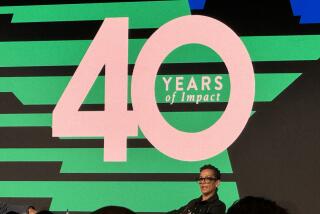Why the Pico-Union Boxing Club, a godsend to youth, is at a crossroads

When the USC Boxing Club needed space about five years ago, Pico-Union Housing Corp. agreed to give it space on one condition: Teach neighborhood kids to box for free. The Pico-Union Boxing Club was born.
The Pico-Union boxing gym was packed, the air salty with sweat.
“Let’s go! Double time, double time!” coach Jeff Sacha barked at the young people doing jumping jacks in front of him. “I can tell who’s been working out!”
There was the fourth-grader who lied about her age to get in. The recovering meth addict. The college kid. Sacha’s wife, nine months pregnant and doing the drills.
Sacha, a 29-year-old USC doctoral student, spent years building the Pico-Union Boxing Club into a bastion of hope in one of Los Angeles’ most densely populated and gang-afflicted neighborhoods, training boxers for free.
The kids needed someone they could count on, who would show up week in and week out. Sacha was that guy.
But in a few weeks, he’ll be gone. Sacha will graduate; he and his wife will move north for sociology teaching jobs at UC Davis. Now, the gym — without a head coach and without funding — is at a crossroads.
“The most important thing you’ve got to know is, the gym’s not going anywhere,” Sacha told his trainees, circled around him after their warmups. “It’s going to be open as much as possible.”
Someone else would lead them in the future, but he warned them that “if you start caring less or stop coming, the gym’s going to fall apart.”
Sacha, a Seattle native, moved to L.A. for graduate school in 2008, living in Pico-Union. A boxer in high school, he quickly started competing with the USC Boxing Club.

Gina Garcia, 13, works on her boxing technique while coach Jeff Sacha, 29, assists another boxer in the gym.
Boxing is not sanctioned by the National Collegiate Athletic Assn. — it was discontinued after a Wisconsin boxer died of a brain injury in the 1960s — and now exists on college campuses through clubs, which typically receive little funding and don’t give scholarships.
The USC Boxing Club had no gym. Sometimes, boxers would practice in dance studios, studying their fighting stances in the mirrors.
In 2010, the club struck a deal with the Pico Union Housing Corp., which runs low-income housing units in the area. The boxers could convert three low-slung, vacant garages behind the organization’s Venice Boulevard offices into a gym. Pico Union Housing would give them money for renovation and let them use it rent-free on one condition: They give free lessons to neighborhood children.
Young people in the neighborhood desperately needed something to do, somewhere safe, said Ricardo Guerrero, social director for the housing organization.
“It’s kept them out of drugs, kept them out of gangs, kept them out of trouble,” Guerrero said of the gym. “It empowers them.”
The USC students yanked the garage doors off, knocked the interior walls down and laid mats on the floor. They raised money for punching bags and mirrors. They built a ring and hung a marker board that bears a blunt message: “If you bleed clean it up!”
Three nights a week, Sacha got there early, opening the gym to the neighborhood. He poured his own money into it. When he and his wife got married, they asked for money for the gym as part of their registry.
Sacha and USC Boxing Club coach Ramon Espada purposefully built in a bit of overlap between the time the youth practice ended and the collegiate practice started.
“I was shocked at how many USC students go four-plus years without ever speaking to the people who live in their community,” Sacha said. He was equally shocked that there were kids who, despite being born and raised in Pico-Union, had never been on USC’s campus, less than two miles away.
At first, when Sacha led the youths on runs through the neighborhood, the boys would get nervous, asking if they could change routes. The area is a complex grid of gang boundaries. His boxers, he said, aren’t gangsters, but they didn’t feel safe.
Now, they run to the Oscar de La Hoya statue outside Staples Center. Some wear their hand wraps, especially during Lakers and Kings games, because they’re proud to be seen in public as boxers.
For now, the gym plans to make do after Sacha leaves with rotating volunteer coaches, Espada said. With up to 30 boxers cramming into the space each practice, the bags are getting worn out, the gloves tattered. The growing gym has set up a GoFundMe account to raise money to pay a coach and buy equipment.
On a chilly Friday night, the boxers loosened up to a song by the Roots: “We’re all on a journey, down the hall of memories. Don’t worry ‘bout what you ain’t got. Leave with a little bit of dignity.”
This is bringing me back. I was really numb for a while.
— Steve Avina, 23
Tony Franco, an 18-year-old in faded gray Converse shoes, led warmup drills. He is gradually taking on more responsibility as an assistant coach, preparing for Sacha’s absence.
Soft-spoken and mature, Franco has been coming to the gym for years. He grew up in Pico-Union and says he was on the “wrong path” as a kid. He’s got round, pink scars on his back and on his chest from when he was shot in Toberman Park right behind the gym. He was 11. The shooter was never caught. He said it made him grow up fast.
Among sweaty teenage boys was Melania Dueñas, a short little girl with a long black ponytail. She shadowboxed in the mirror, lips pursed in concentration, staring down her own reflection. She stood in front of Franco as they did jumping jacks. The 9-year-old tried to keep her face tough, but couldn’t suppress a grin as they locked eyes.
“Keep going, keep going!” he told her. “Faster! On your toes!”
Melania first came with a neighbor, a skinny 13-year-old girl, a few months ago. The gym doesn’t allow boxers younger than 12, so she lied about her age.
Melania confessed to her mother, who made her go back and tell the truth. Sacha let her stay. She wants to be “Little Ronda” Rousey, she said, sporting her hot-pink Everlast gloves. She tells all her friends she’s a boxer.
“They’re like, ‘You’re short! You’re never gonna beat me up! And I’m like, ‘Excuse me? I go to boxing.’ And they’re like, ‘Never mind,’” she said, with her best bravado.
She jabbed at a red punching bag while her mom, Maria Macedonio, 28, held it. Macedonio joins the drills. She hadn’t worked out in a decade, until her daughter inspired her.
Circling a punching bag nearby was Steve Avina, 23. When he first started coming to the club months ago, he was “like a little skeleton,” he said, trying to quit drugs. Sacha’s wife, Caitlin Patler, lifted his spirits recently by telling him his face looked fuller, more alive.
Avina grew up nearby and dropped out of school at 16. As a kid, playing with his cousins, he would run to his house, hearing gunshots. He started coming to the gym to pull himself back together.
“This is bringing me back,” he said. “I was really numb for a while.”
Sacha pushed him to go back to school, and he wants to become a politician or a psychologist, someone who could help the community. His family tells him he’s smart. He’s finally started to see that.
“I believe that I’m smart,” Avina said. “I just want to be able to use it. I just don’t want to be a smart thug, I want to be something more than that. I just want to be able to motivate people, you know?”
Hoy: Léa esta historia en español
ALSO
Shaolin monk is bringing more than kung fu to Chinatown
How to help elementary school students feel safe after a stabbing on campus
How the killing of Latasha Harlins changed South L.A., long before Black Lives Matter
More to Read
Start your day right
Sign up for Essential California for news, features and recommendations from the L.A. Times and beyond in your inbox six days a week.
You may occasionally receive promotional content from the Los Angeles Times.







